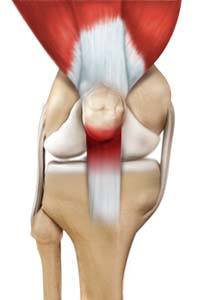
What is Jumper’s Knee?
Jumper’s knee, also known as patellar tendinitis, is inflammation of the patellar tendon that connects your kneecap (patella) to your shinbone. This tendon helps in the extension of the lower leg. Any damage to the supporting ligaments may cause the patella to slip our of the grove either partially (subluxation) or completely (dislocation).
Causes of Jumper’s Knee
Jumper’s knee usually results from repetitive trauma or overuse, particularly from sports activities that involve jumping such as basketball or volleyball. Therefore, this condition is known as jumper’s knee. Rarely, this condition may also occur because of an acute injury to the tendon that has not healed properly.
Symptoms of Jumper’s Knee
Pain over the patellar tendon is the first symptom of jumper’s knee. You may also have pain during activities, especially jumping or kneeling. Rarely, swelling around the tendon may be seen.
Diagnosis of Jumper’s Knee
Your doctor will evaluate your condition based on your symptoms and physical examination. An X-ray of the knee may be ordered to ensure that there is no problem involving the bones or bone spur around the knee. An MRI scan can reveal degenerative changes in the patellar tendon.
Treatment Options for Jumper’s Knee
Conservative Treatment Options for Jumper’s Knee
Treatment options for jumper’s knee:
- Rest the injured knee and avoid activities such as running and jumping that worsen the condition.
- Non-steroidal anti-inflammatory medications (NSAIDs) may be prescribed to provide relief from pain and swelling associated with patellar tendinitis.
- Stretching before exercising is important to prevent the recurrence of patellar tendinitis. These exercises can also help strengthen the patellar tendon and nearby muscles such as the quadriceps, hamstrings and calf muscles.
- The application of ice to the affected area helps to control the inflammation and reduce the swelling.
- A knee support or strap (called an intrapatellar strap or a Chopat strap) can be worn to relieve pain by directing the force away from your tendon and into the strap.
- Iontophoresis involves the application of topical corticosteroid medication to the affected area with the help of a small device that uses an electric charge to deliver the medication through your skin.
- Corticosteroid injection may be administered directly into the sheath around the affected patellar tendon under the guidance of an ultrasound. This helps to relieve pain and perform strength exercises without any pain.
Surgery for Jumper’s Knee
In rare cases, if there is persistent pain, surgery may be considered when other treatment options fail. Surgery involves the removal of severely damaged parts of your tendon and repair of any tears in the tendon.













